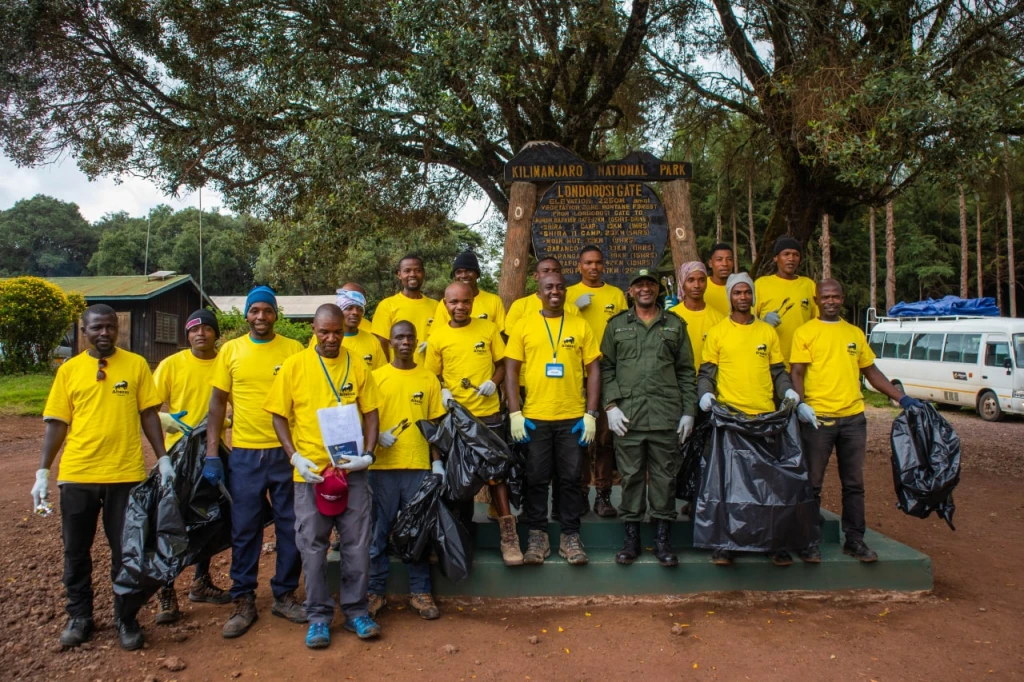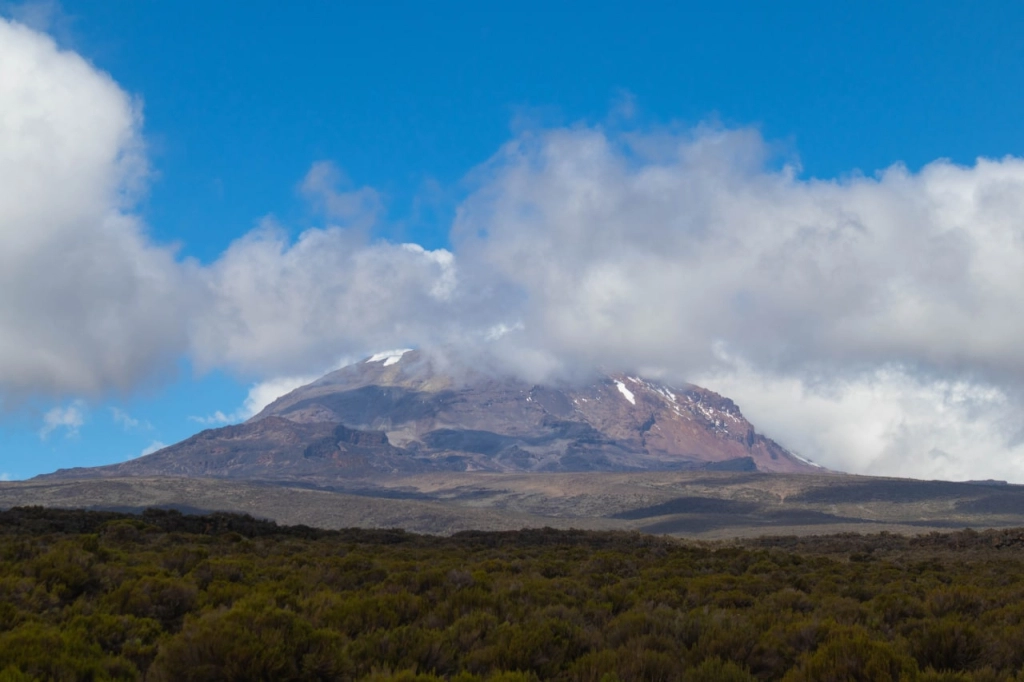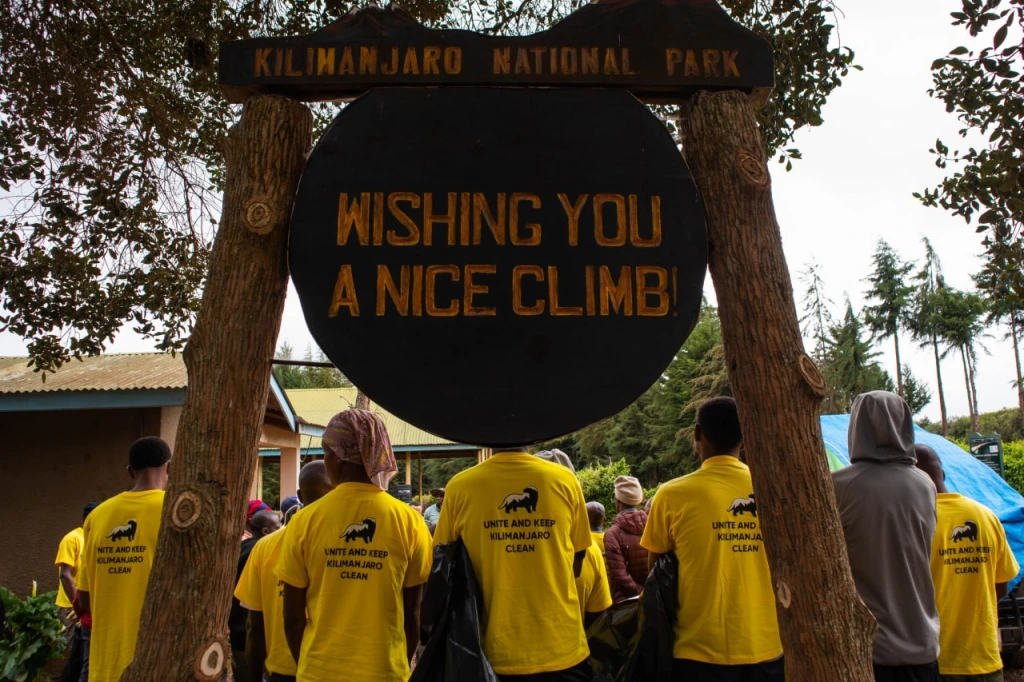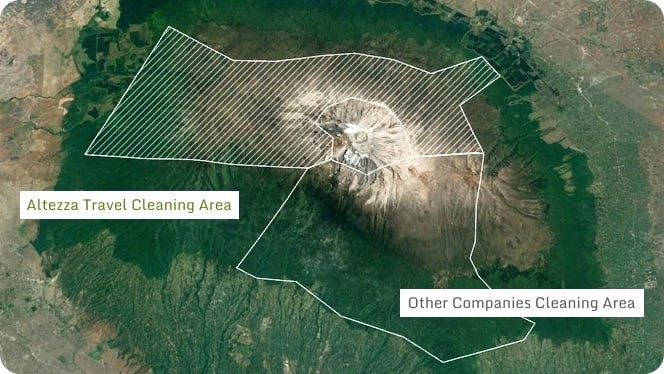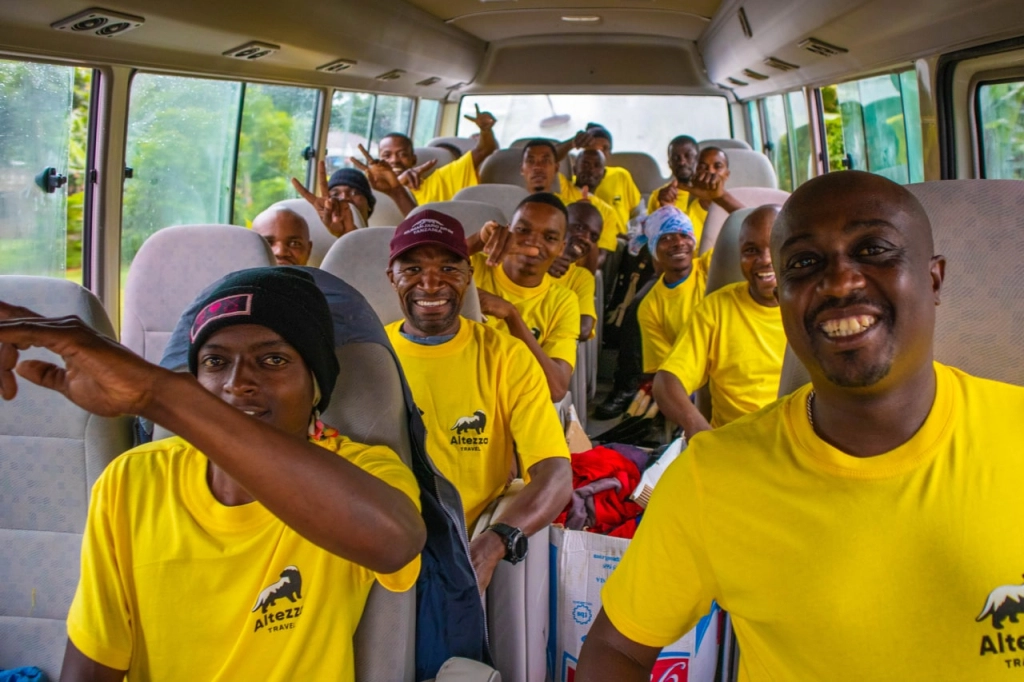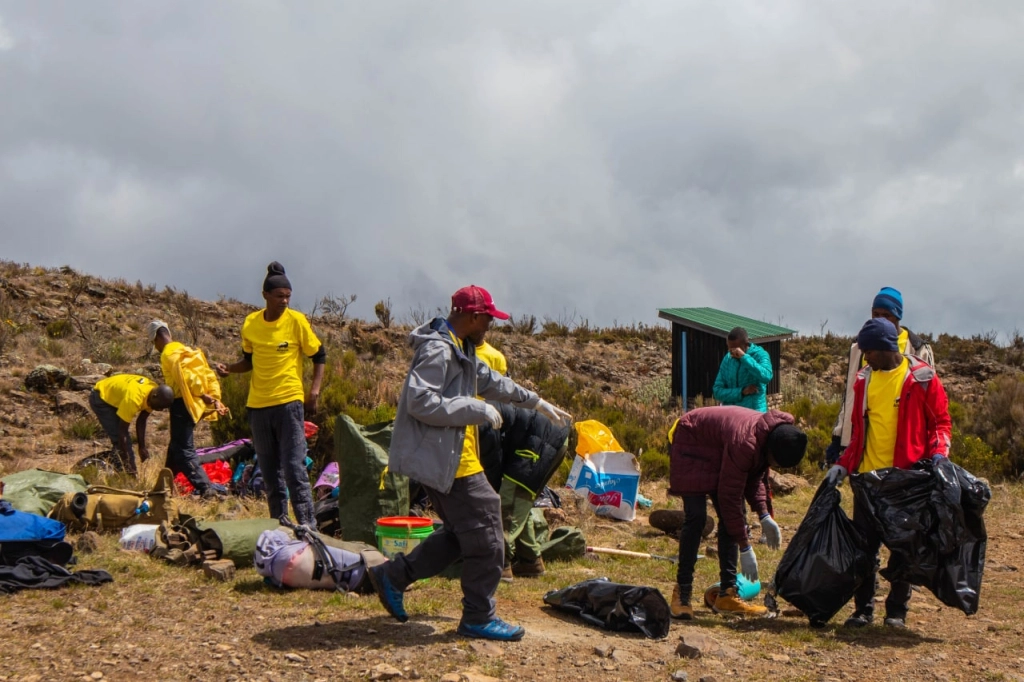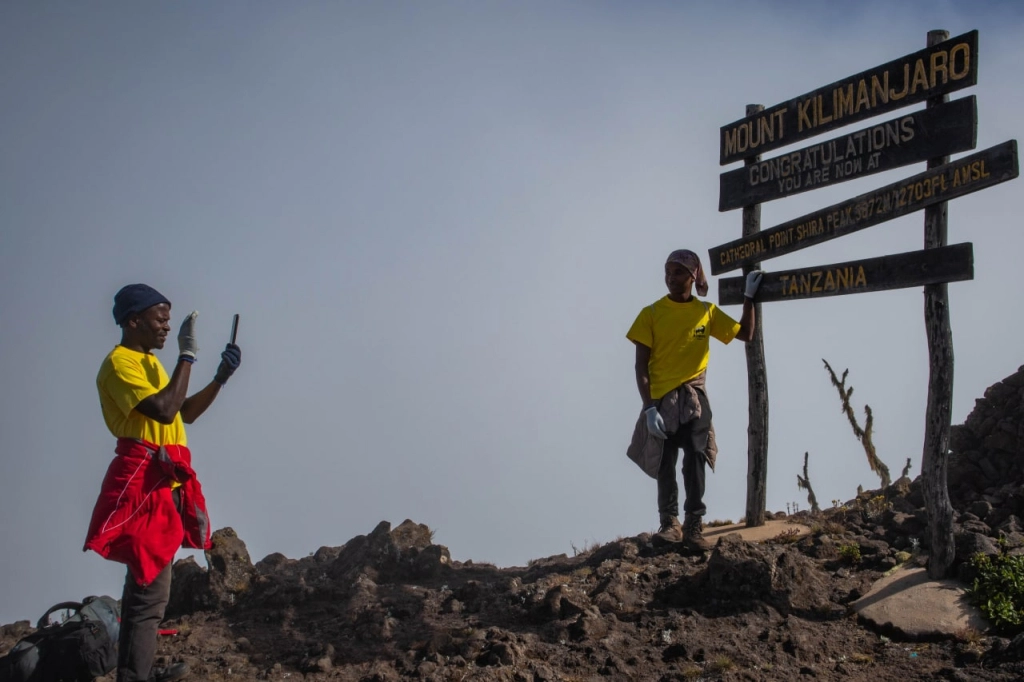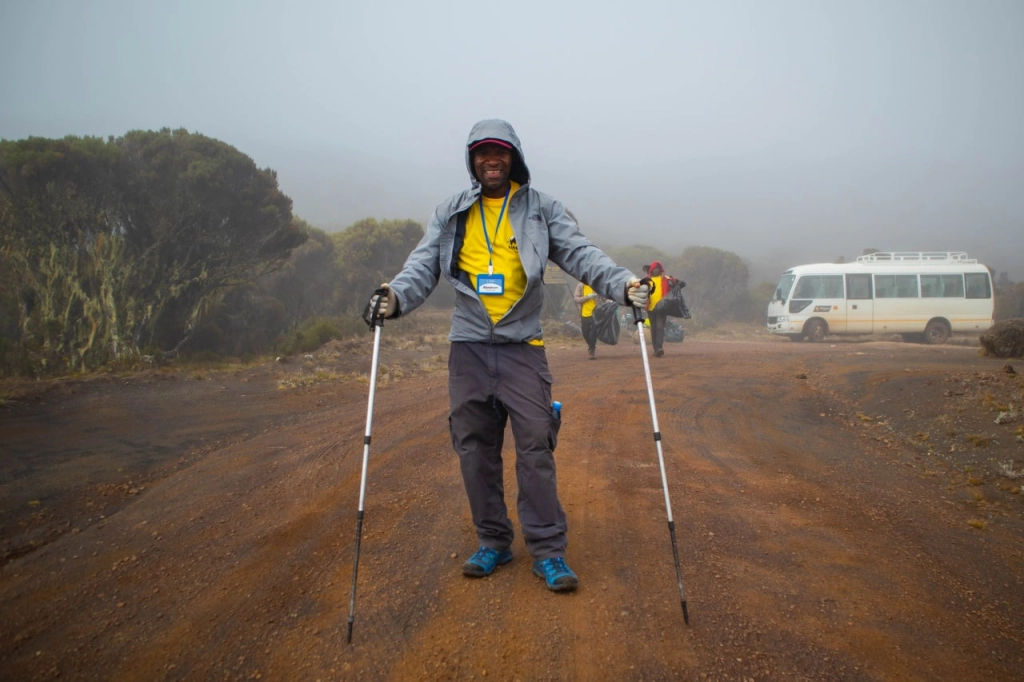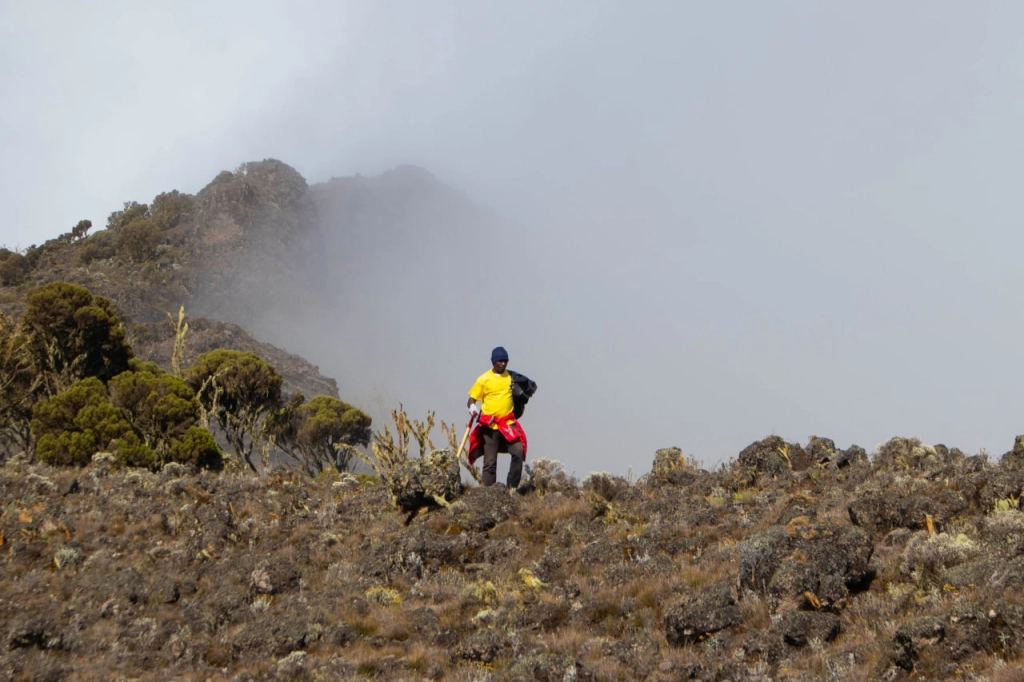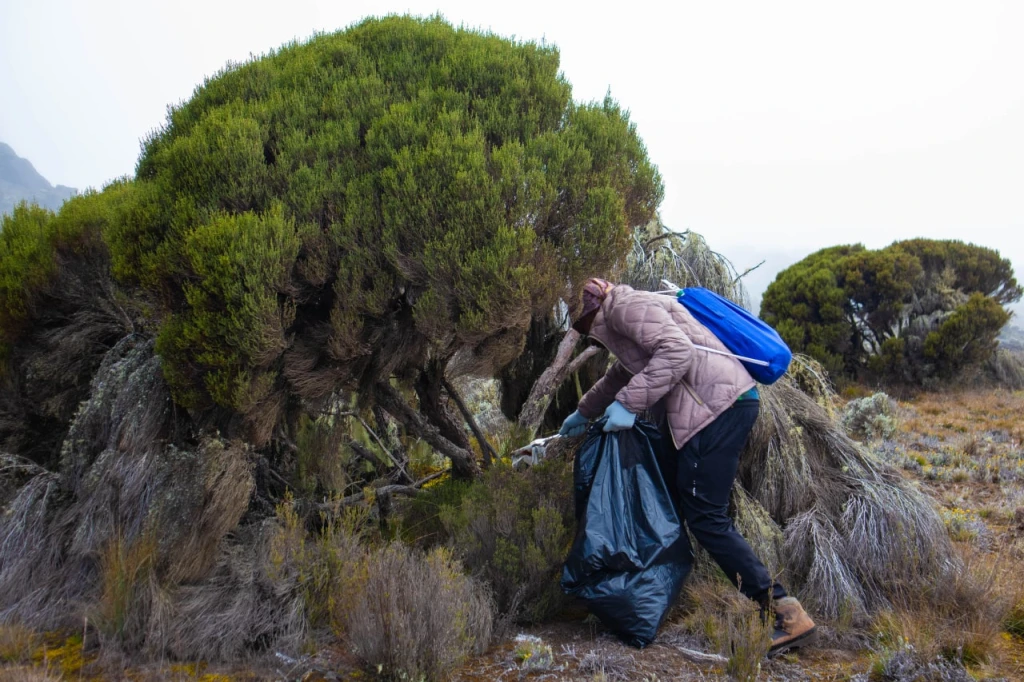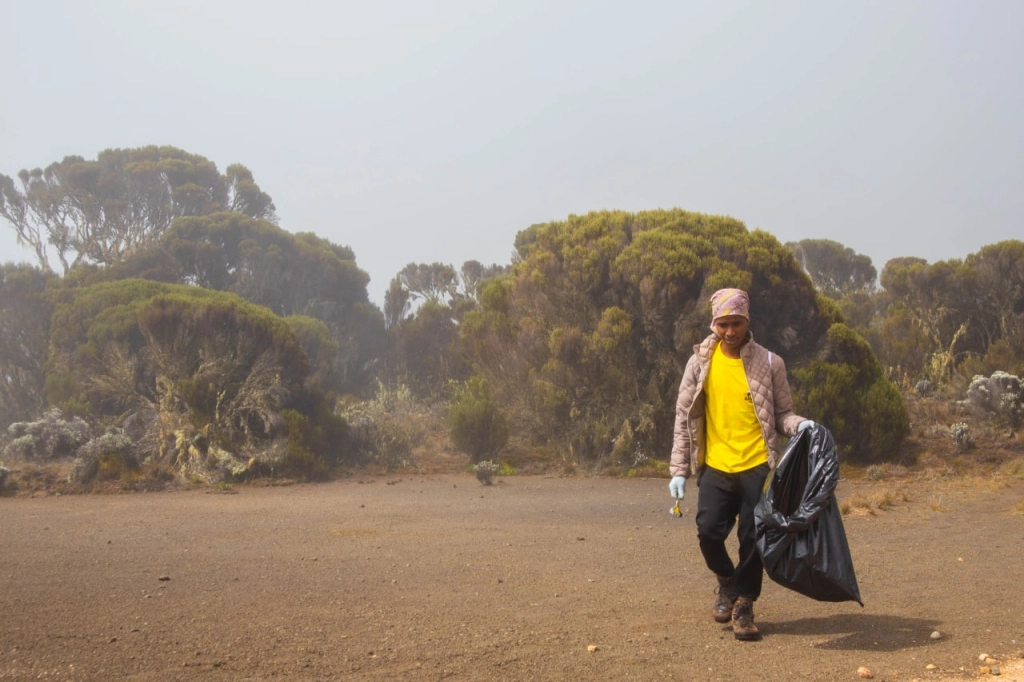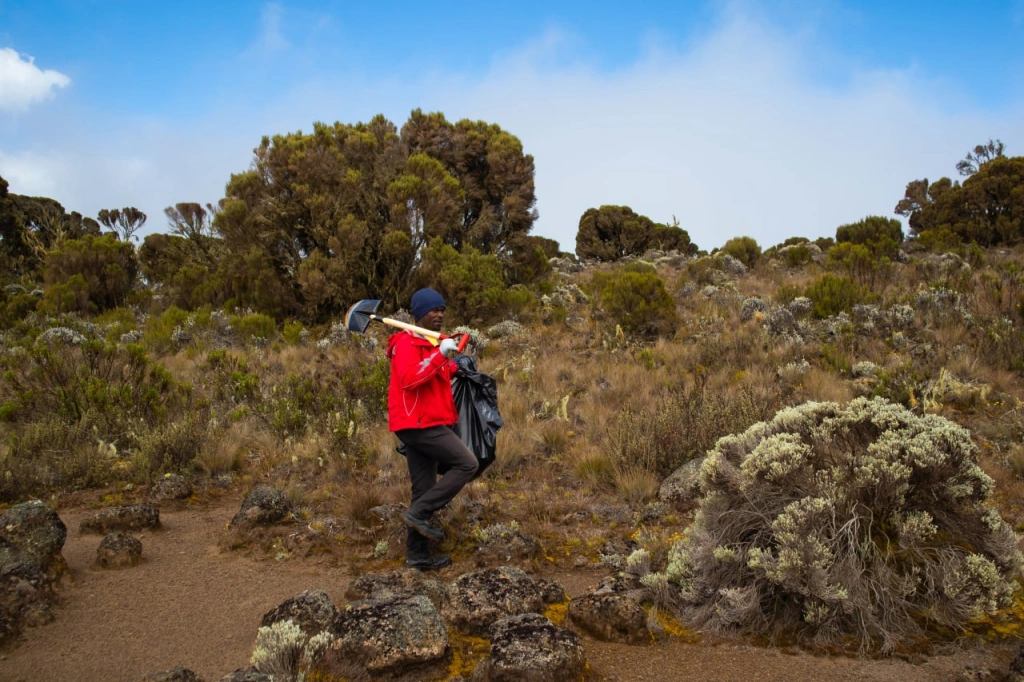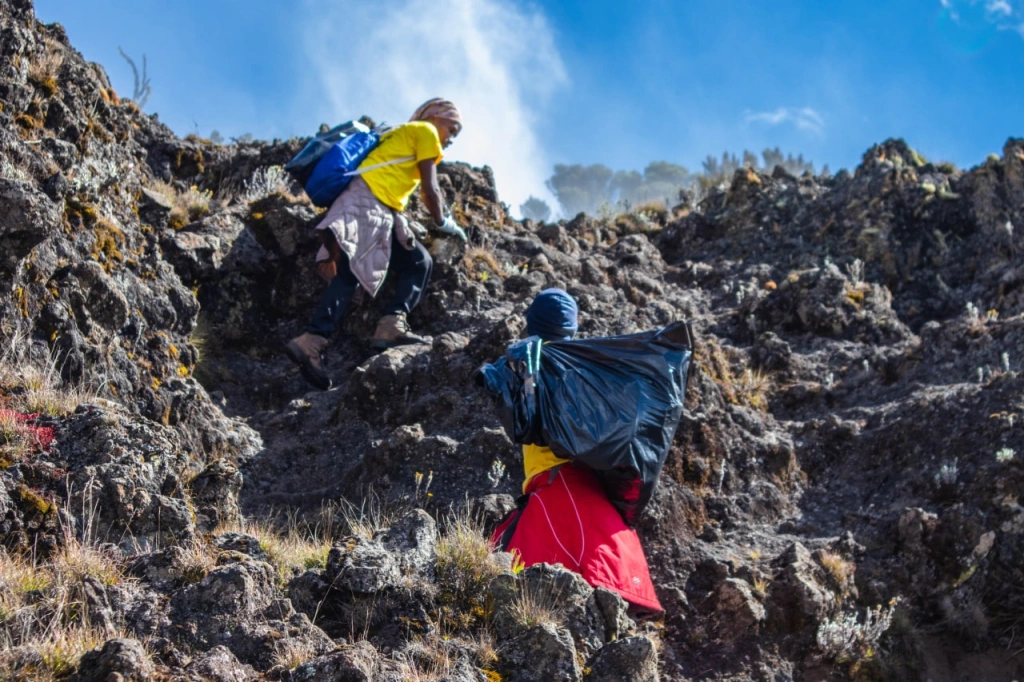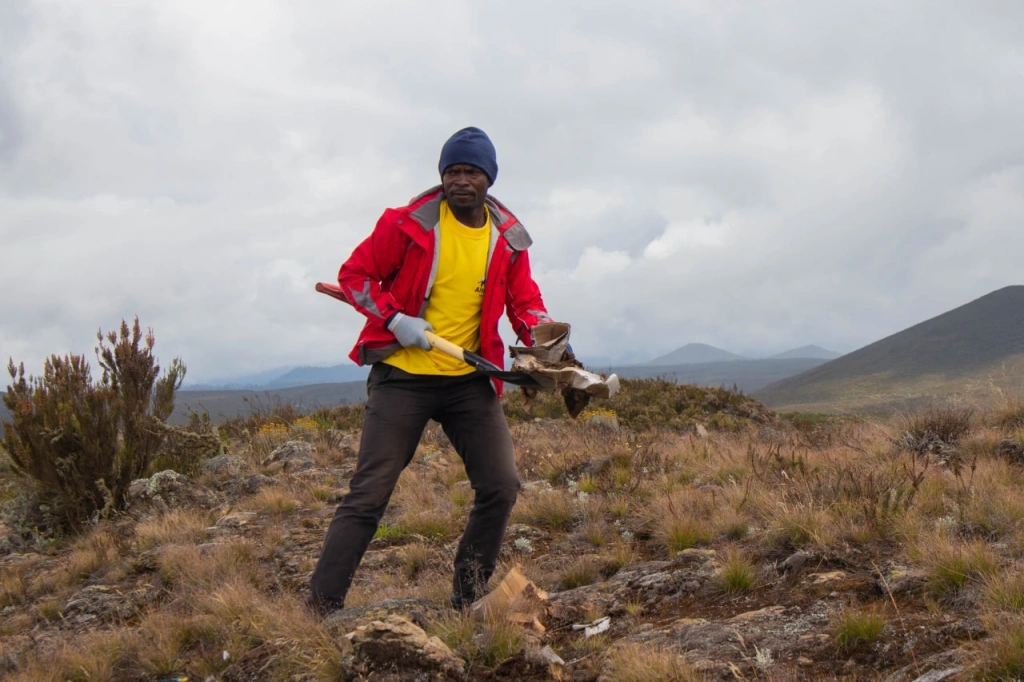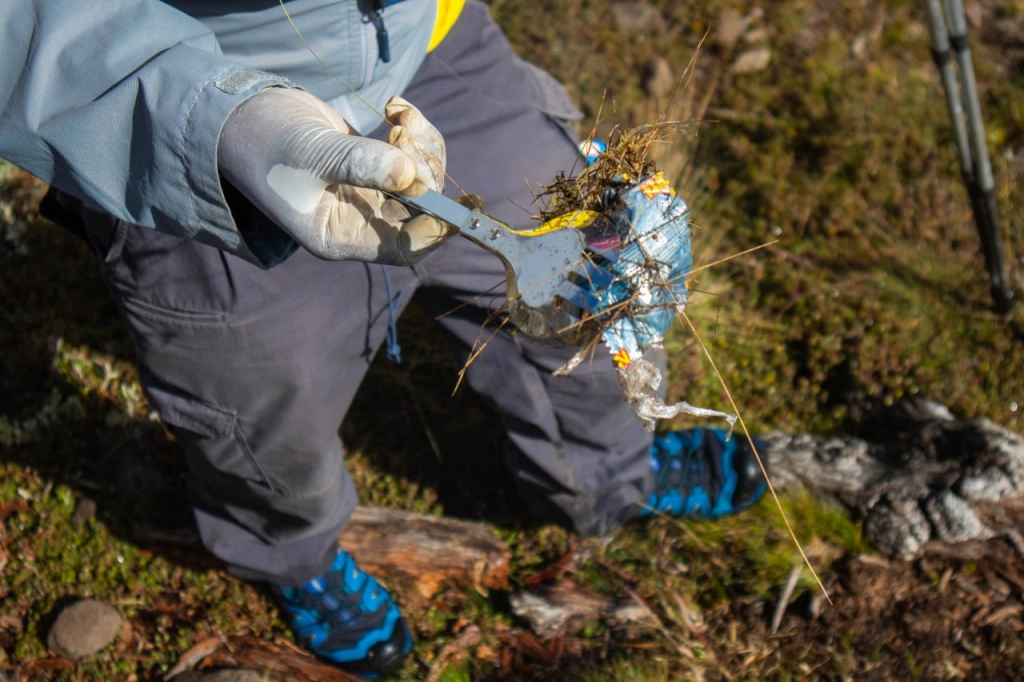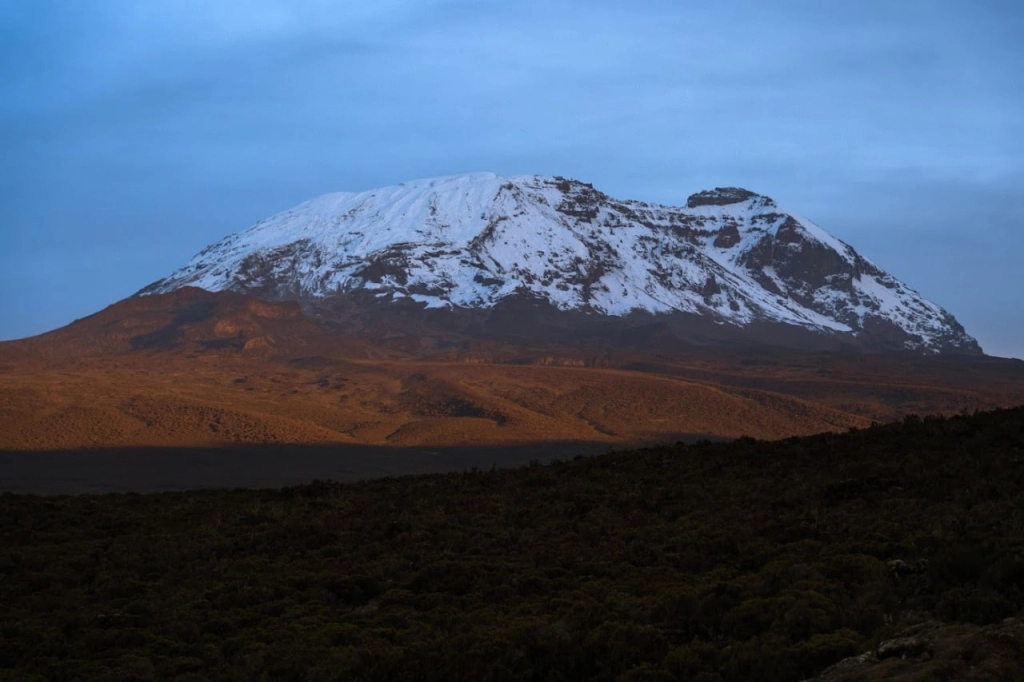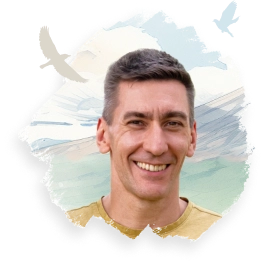In late May of 2022, a non-governmental organization called ‘Leave No Trace’ worked together with KPAP porters to promote a special project for waste collection in Kilimanjaro National Park. Altezza Travel responded to this appeal and assigned a large team of porters for this task. For five days, the porters and guides from Altezza Travel roamed through half of the national park and collected waste from the popular trekking routes and camps.
Is there Litter in Kilimanjaro Park?
It is forbidden to litter in the national parks of Tanzania. The park rangers and guides accompanying tourists ensure compliance to this law. As a rule the climbers carry everything they have brought with them away from the park grounds. All in all, the Kilimanjaro Park (the mountain peaks and the adjacent territory) is kept tidy.
Still, sometimes small litter remains at resting places and near the popular tourist areas. Most often the litter contains fragments of packages and personal care products. These small bits of litter can be carried away with the wind and scattered in Kilimanjaro National Park. In the last few months we had started to notice litter here and there during treks with climbing groups. Thus, we were glad to accept an offer from partner organizations and joined the campaign to tidy up the slopes of Kilimanjaro.
Altezza Travel elaborated and used the slogan: “Unite and keep Kilimanjaro clean”, and made t-shirts bearing this print for the porters.
Off to clean Kilimanjaro!
Where and How Altezza Travel Tidied the Park Up
The national park administration assigned Altezza Travel to clean up the largest and most popular section, on account of the company being the largest Kilimanjaro climbing tours operator. In geographical terms, it’s about half of the total park area (west and north). On a practical level, this is the territory where the majority of groups of tourists go trekking with us.
It was decided to set the main Kibo cone aside for the time being as there was too much snow at that time, and cleaning-up was impossible. Packed snow will not melt off the trails for several more months, around July.
Day 1
Our expedition coordinators (who are familiar with all areas of the park) designed the route and prepared two teams of porters. On June 1, the first day of winter in Tanzania, they left for Kilimanjaro Park to walk along the hiking trails with equipment and everything else they needed to complete the clean up.
The teams of porters entered the park through two access points: Lemosho Gate and Londorosi Gate. During the first two days, each group had different routes and different objectives. On the third day they were to meet and continue along the same route to reach Nalemuru Gate, the gate of the Rongai Trail, by the end of the fifth day.
The first group, led by our experienced guide Abraham, began at Morum Barrier Gate, the starting point for the Northern Circuit and Shira routes. It offers a panoramic view of the Shira Plateau sprawling on the site of the extinct volcano. Now all that is left of it is a chain of peaks around the crater’s edge. The road from Morum Barrier to Camp Shira 1 is used by climbers as a starting point. Our first group started cleaning up here.
On that same day, the first group walked along the trail leading to Cathedral Point, which is 12,703 ft (3872 meters) high. From there, an excellent view of Shira Plateau and the valley on the other side of Kilimanjaro.
The second group, led by the guide Joseph, was dropped off at the Mti Mkubwa camp which is also known as ‘Big Tree Camp’. This group was tasked to move in a parallel fashion towards Shira 1 Camp on the other side of the mountain ridge.
Day 2
On the second day, the groups were again assigned to different tasks: he group of porters guided by Abraham took over the cleaning of the areas between the Shira 1 and Shira 2 camps, and after that, they headed through the valley to Moir Hut Camp. This camp is situated on the Northern Circuit trail which bends around Kibo Peak from the north.
For Joseph’s group, the plan for the second day was to move from Shira 1 camp to Shira 2, and then proceed to Lava Tower, a location favored by tourists. It is a natural stone tower formed 150,000 years ago by hardened lava. Lava Tower is 295 ft (90 meters) high, and it never fails to attract climbers; you can make excellent pictures against its background. Quite a lot of rubbish accumulates in the camp near the tower so it took a long time to clean.
The same group also cleaned up a leg of the trail leading to Arrow Glacier Camp (dubbed such due to a presently melted glacier shaped as arrowhead). This is the highest point where collection of litter without snow is possible during this season. Arrow Glacier Camp lies at the altitude of 16,085 ft (4903 m). At the end of that day, the second group descended to Moir Hut camp and join Abraham’s team.
Day 3
The third day of clean-up on Kilimanjaro started with splitting the team of porters into two groups; one set off to deliver the litter to a collection point at Moir Hut, where the park rangers would pick it up, and the other group cleaned up to and fro along the Lent Acclimatisation Trail towards Lent Hills.
The Altezza Travel porters moved towards Pofu Camp, also called Buffalo Camp. It is a part of the Northern Circuit trail, and the camp is a popular location for climbers. There, at 13,123 ft (4,000 m), the third day of Kilimanjaro clean-up came to an end.
Day 4
On the fourth day, the porters arrived at the 3rd Cave Camp, which lies on the crossing of Northern Circuit and Rongai routes. From this camp, the climbers ascend to a storming camp and then moved towards Uhuru peak. We were aware of large amounts of snow in June, and thus, the route of our group led down along Rongai to avoid the snow.
By the end of the fourth day our team had descended to Kikilewa Camp to an altitude of 11,811 ft (3,600 meters). During this time several bags of garbage were collected, which the porters had to carry all the way out of the park.
The Kilimanjaro cleanup campaign was coming to a close, and the next step was the descent to the Rongai trailhead.
Day 5
On the last day of the cleanup campaign, the entire group of professional porters moved down to 2nd Cave Camp. All the litter was to be brought down to the Nalemuru Gate which serves as the entrance to the national park for those who climb the Rongai route.
This was how the guides and porters of Altezza Travel completed their round of most of the tourist area of Kilimanjaro National Park. They worked together for five days on one of the busiest routes to collect 13 bags of garbage. All of it was taken to a waste collection point and removed from Kilimanjaro National Park.
How to Keep Kilimanjaro Clean
After traversing all the trails available at this time of year, the park is once again clean and free of the debris left over by groups of climbers from all over the world. In addition to Altezza Travel, other commercial companies operating in the region helped with clean up efforts in the national park.
The cleanup of the snow-covered Mt. Kibo will take place in a few months, when there is less snow.
We analyzed the litter situation and prepared a list of the most common objects left by people in the natural reservation area.
These are:
- wet wipes. Modern wet wipes are made of polyester and polypropylene fibers, that is, plastic. They are not recyclable, and in the natural environment it takes 100 or more years for one wet wipe to decompose (depending on the composition). At the same time, the biodegradation is never complete, we can only talk about the decomposition into microparticles. These, in turn, enter the food chains of animals and humans.
- juice straws and juice packages;
- chocolate bar wrappers;
- toilet paper.
We also come across abandoned hand and foot warmers in the snow-covered area of Kilimanjaro.
What can be done to reduce the amount of litter?
Here are some simple suggestions to observe while you are trekking Kilimanjaro:
- keep your own waste with you, don’t give it to porters;
- keep the waste until you leave the park;
- watch over small litter which the wind may carry away;
- do not use wet wipes for toilet paper (these are plastic and it takes decades and even centuries to decompose in nature);
- when possible, help other group members to carry litter to the exit.
We will continue to do our part to keep Kilimanjaro National Park clean, and all visitors to the protected area are asked to leave this special area as they find it Altezza Travel is grateful to the government of Tanzania and the managers of national parks for such a responsible attitude toward the protected areas. We gladly support such initiatives.
Our slogan and appeal remains in force for our partners, colleagues, and guests from other countries: Unite and keep Kilimanjaro clean!
Watch a video about our guides, whose tasks, among other things, include making sure that Kilimanjaro National Park preserves its natural purity.
The irreplaceable helpers of the guides on Kilimanjaro are the porters, ordinary guys who come from villages on the southern slope of Kilimanjaro. We tell you how Altezza Travel arranges their work and what we are doing together with the Kilimanjaro Porters Assistance Project to improve their quality of life.











